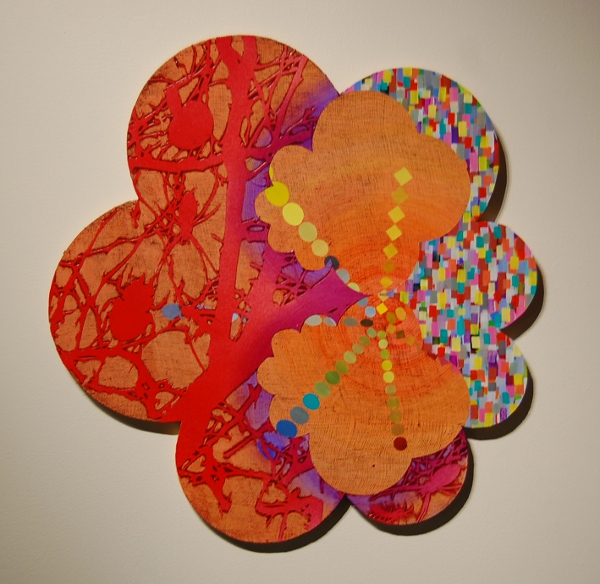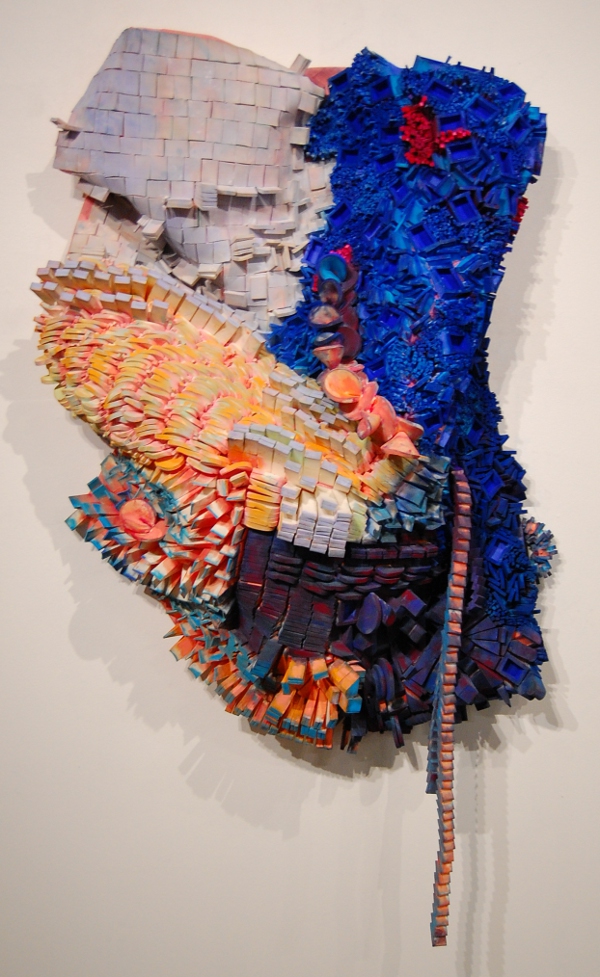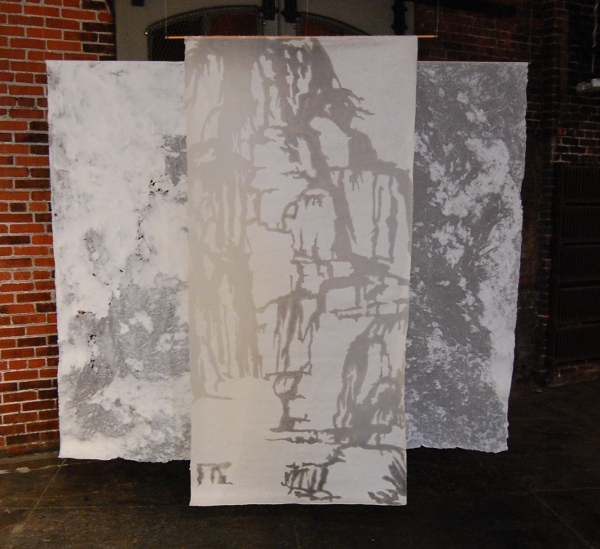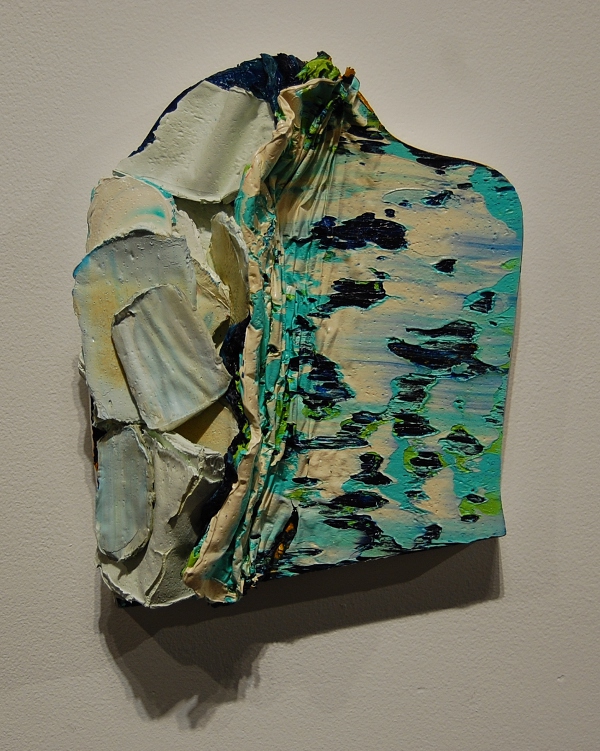
University of Delaware @ Crane presents “Surface as Signifier”
The University of Delaware Art Department’s space in the Crane Arts Building (UD@Crane) has a new nine-artist exhibition underway that seeks to examine the role of surfaces in visual creations. The show “Surface as Signifier,” curated by Peg Curtin and Bruce Garrity, manages to delve into conceptual territory by judging these books (or rather artworks) by their covers, despite the old adage.
Robert Straight exposes the picture planes of his pieces in ways that are anything but subtle; they twist and bristle with cutout shapes, veiny patterns, and blocks of vibrant colors. His inspirations however are not quite as clear. While none of his images are untitled, they possess obscure names such as “P494” and “P499.” Presumably numbered only in series, their patterns remain non-objective and sometimes wildly complex. Straight’s primary motivating factor seems to be layering, and he does so with both visual acuity and a sense of organized chaos. He utilizes rectangular boards as well as shaped surfaces to produce these physically-flat scenes which, through his techniques, seem to expand on into fractal infinity, even though they live in only two dimensions.
Margery Amdur, “Amass #4.”
Elsewhere, Margery Amdur wrestles with the often complicated elements of visual texture. Since it is generally frowned upon to grope art, creators aiming to make artwork texturally appealing have the very specific challenge of translating the sense of touch into sight. Amdur does so quite splendidly in her “Amass” series. Using cosmetic sponges as her medium of choice, she builds forms which are both rocky and rigid looking, but simultaneously light and airy. Instead of applying makeup with these objects, she applies pigment to them, making them into the product instead of part of the process. Interestingly enough, the texture and color of face makeup Amdur’s material might otherwise be applying is itself an affront, which fits snugly into the show’s theme from yet another angle.
Nicole Donnelly, “Solid States: Vapor, Ice, Water.”
Three hanging sheets near the back of the upper gallery at UD@Crane represent the three states of matter with which we are all familiar: vapor, ice, and water. Artist Nicole Donnelly prints a different pattern on each of these thin pieces of handmade linen paper, and they dangle lightly from the ceiling. They are not quite translucent, but seem as though they should be. As far as surface goes, the miniscule depth of these sheets provides what could only be described as just a surface. They hang in three-dimensional space – much like the matter they represent – but exist as two-sided, two-dimensional manifestations which rightfully resemble one another. After all, like vapor, water, and ice, they are all variations of the same material.
Leslie Wayne, “One Big Love #56.”
Drooping forms and sedimentary patterns define the works by Leslie Wayne in her series “One Big Love.” Instead of merely applying paint to a surface, she guides the surface to instead take its own shape. The ribbon forms of viscous oil paint mimic lava flows and occasionally crashing waves. While the colors Wayne selects are intriguing, they are certainly trumped by the sculptural elements in her paintings. Like the 3D film craze, these paintings seem to come right at you. Wayne’s surfaces jump out and engage the viewer as much as the viewer approaches them, adding a curious dialogue to an otherwise fairly static show.
Overall, “Surface as Signifier” proves that while beauty may only be skin deep, the depth of the beauty itself may be many fathoms more than we may first expect. Other artists in the exhibit include Donna Czapiga, James Erikson, Jim Lee, Anne Seidman and Douglas Witmer. Through focusing on the topmost layers and surfaces of their work, these artists demonstrate how we may paradoxically garner an understanding which runs much further outward and inward. The exhibition will run through March 22.
UD@Crane is located in the Crane Arts Building at 1400 N. American St., Philadelphia; [email protected]; cranearts.com.
Recent Content
-
Artsarticle ·
-
Artsarticle ·
-
Artsarticle ·




